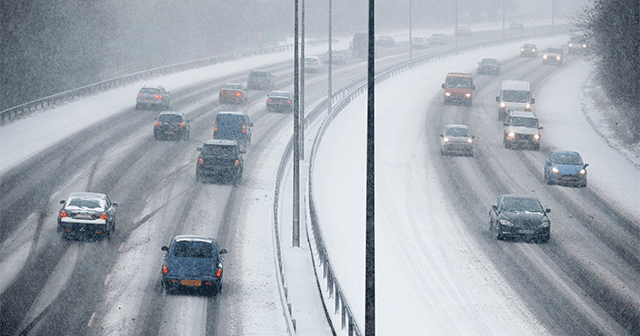4 Ways the Weather Experts Support Winter Maintenance Services

Knowing when to treat roads, or not, relies on having the right data to inform decisions. It’s a balance the weather experts know well. Working with over 100 highways authorities across Great Britain alone, covering over 160,000 miles of public roads, gives unparalleled insight into the unique and challenging conditions that maintenance teams work through to keep the country moving and prevent road traffic incidents.
Here are four ways the weather experts help support winter maintenance services:
1. Access to meteorological expertise
Meteorological experts support decision making through forecast consultancy. According to Lloyd Tilbury, Grounds Maintenance Supervisor for London Borough of Sutton Council, “Forecast consultancy via the IVR call-backs has been great. We get call-backs within 10 minutes and speak to an expert meteorologist who is fully briefed on the weather for our patch, meaning we’re never left hanging or wondering.”
The team also includes people with extensive road-specific knowledge, such as different types of road slipperiness. This industry-relevant experience, combined with their understanding of weather patterns and anomalies, allows the experts to support road treatment decisions.
2. Using mature, road-specific weather models, monitored for accuracy
The experts use proprietary road and route models to identify situations where the weather poses a risk on the roads. Here’s how the two models work:
- The road surface model combines a physical and statistical model, designed to calculate the forecast for road surface temperature and conditions at specific locations, such as Road weather information system (RWIS) locations and downscaled locations (i.e. ‘on-the-spot’ forecasts).
- The route-based forecast model is a physical model, designed to calculate forecasts for road surface temperatures and conditions for predefined gritting networks (or routes).
The sophisticated physical and statistical modeling techniques combine the best available weather models with data collected from road weather information stations (RWIS), historical predictions, and records of actual weather conditions. This approach generates the most precise location-specific forecasts available.
As conditions change, you need weather information that’s accurate and up to date. The weather experts continually monitor the quality of their forecasts: both by having meteorologists correct them 24/7 as needed, and by benchmarking against alternatives.
Constant monitoring of factors such as road-surface temperature and condition, together with their capacity to incorporate live weather observations into their model, ensure that their forecast is of the highest quality in changing conditions. Analysis of radar and satellite images further refines their forecasts and nowcasts. Benchmarking has consistently shown these forecasts to outperform both raw weather models and the competition.
These weather models have consistently proven to be more accurate and reliable than any alternative. It’s a view backed by customers, including Robbie Jamieson, Essex Highways Winter Service Manager, who says: “The DTN performance and accuracy have always been of a high industry standard.”
3. Intuitive systems, supported by training
Having the right information is one thing. Having the correct information, in an easy-to-use format, is another. Clear, to-the-point user interfaces simplify decision making by giving you the most relevant information first. Then you can drill down to important details with ease. Get effortless access to short-term and long-term road-specific forecasts.
Easy-to-read, color-coded tables identify the most relevant information at a glance. The hazard table alerts you to any upcoming road weather hazards such as hoar frost, snow, ice, and freezing rain. The platform gives you a clear overview of road-surface temperatures and data from RWIS sites. View real-time observations, forecasts for the coming 3 hours, and animated precipitation type radar to distinguish between rain, hail, snow, and freezing rain. RoadMaster customers with Route-Based Forecasts can now view them on the RoadMaster Dashboard map, without having to go to the Classic pages.
Additionally, to help the team get up and running, the experts can deliver familiarization training. These sessions included highways meteorology training to ensure a swift and smooth mobilization.
4. Developing and innovating for the future
Meeting the growing needs of customers and collaborating with them to innovate for the future is a crucial part of supporting winter road maintenance.
Suggestions for improvement made by DTN customer, Oxfordshire County Council, have led directly to product updates. Likewise, collaborating with Essex Highways means that the weather experts are confident the solution meets their requirements.
It’s also about helping customers to transition to new, more modern approaches. Northamptonshire County Council Highways team wanted to upgrade its strategy, replacing traditional area-based weather forecasting service with a more modern route-based forecasting approach. The success speaks for itself. According to -Richard Woodhouse, Senior Maintenance and Innovation Manager at Northamptonshire County Council. “With Route-Based Forecasting for Northamptonshire County Council, it’s looking like we saved around 9.2% of the total winter maintenance budget.”











 Comprehensive weather insights help safeguard your operations and drive confident decisions to make everyday mining operations as safe and efficient as possible.
Comprehensive weather insights help safeguard your operations and drive confident decisions to make everyday mining operations as safe and efficient as possible.